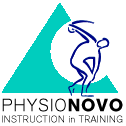The biopsychosocial model - Too much psychosocial an not enough bio?
Balance of the biopsychosocial model in the assessment and treatment of back pain.
Within the current treatment concepts of aspecific chronic low back pain, the multidisciplinary treatment based on the biopsychosocial (BPS) model is central. According to this model, the perception of chronic pain is influenced by environment, cognitions, emotions, expectations, physical condition and behaviour.
In response to the disappointing results of back pain treatment, which until the middle of the 20th century was based almost entirely on a traditional biomedical model of the back, George Engel and Jon Romano of the American University of Rochester formulated the biopsychosocial model in 1977. With this they suggested that not only the biological factors were decisive for understanding the medical condition of a person with pain, but also the psychological and social ones.
Now, almost 50 years later, the extraordinary development of radiological examination techniques, which have made it possible to make seemingly irrefutable diagnoses of back pain, has led to a huge development of biomedical-based treatment techniques (surgical, orthopaedic, medical and paramedical). In addition, these imaging techniques confirmed the concept of neuropathic (nerve) pain due to nerve damage caused by compression and/or shortening. However, recent research shows that the diagnostics based on these imaging techniques do not lead to more effective treatment strategies, which is also reflected in various guidelines. Apparently, many forms of back pain cannot be clearly diagnosed, which explains the term "non-specific back pain".
In addition, the modern view that chronic pain can be caused by disturbed functions of (parts of) the complex system of pain perception or of the communication between these, is gaining ground. According to the IASP (2011), indications for these disturbed regulatory mechanisms are central sensitisation, in which centrally located nociceptive neurons react more strongly to normal or subconscious afferent input, and peripheral sensitisation, in which peripheral nociceptors react more strongly to stimulation of their receptive fields, e.g. through the release of pain mediators.
Peripheral sensitisation can then lead to central sensitisation.
Chronic pain is thus disconnected from the scientifically founded concept of nociception. For many scientists and therapists, this altered perception is almost the only explanation for pain.
For this reason, too, the biopsychosocial model has continued to develop, with the behavioural aspects taking precedence. In the current multidisciplinary treatment protocols, specific physical training is subordinate to the desired behavioural change, which should lead to, among other things, the continuation of general daily activities, no more and no less. Recent scientific research shows that the results of this approach are also far from optimal. Apparently, the existing scientific framework, exclusively focused on spine pathology, is unable to provide a clear direction for the process of unambiguous diagnosis and related effective rehabilitation management.
Mosely and Butler (2014) as proponents of the biopsychosocial model argue for a different understanding of pain - explain pain (EP), which in summary includes the following:
- EP is not a technique but a set of educational interventions
- aims to change understanding of the biological processes underlying pain
- emphasises the distinction between nociception and pain
- emphasises that pain is a protective mechanism and not an indicator of tissue damage
- increases pain-related biological knowledge and reduces catastrophising and presents a
biology of pain that underpins a biopsychosocial approach.
The question now is, how to improve the multidisciplinary treatment of people with back pain.
More and more recent scientific studies as well as statistics from e.g. health insurance companies show that the initially radiologically diagnosed neuropathic character of
pain caused by spinal column pathology, as well as the sensory nociplastic nature of pain, is ultimately of a nociceptive nature. All too often, this pain turns out to be caused by functional disorders of the hip, shoulder and/or vertebral joints. The PhysioNovo concept therefore assumes that, despite central and peripheral sensitisation, proper joint function remains the primary determinant of whether or not musculoskeletal nociceptive pain, even chronic, is experienced.
One possibility for improving the multidisciplinary treatment is that the increased knowledge of functional-anatomical research of both the joints and the spinal column, and the specific motor treatment programmes derived from this, are actually incorporated into the existing multidisciplinary programmes. Integrating specific training of the function of the hip, shoulder and vertebral joints in close combination with behavioural modification could be an example of such a specific programme.
For example, a fresh clinically rational approach to recurrent chronic back and leg or arm pain and an innovative specific integral training programme of peripheral and spinal joints combined with a behavioural approach can lead to surprising results.






